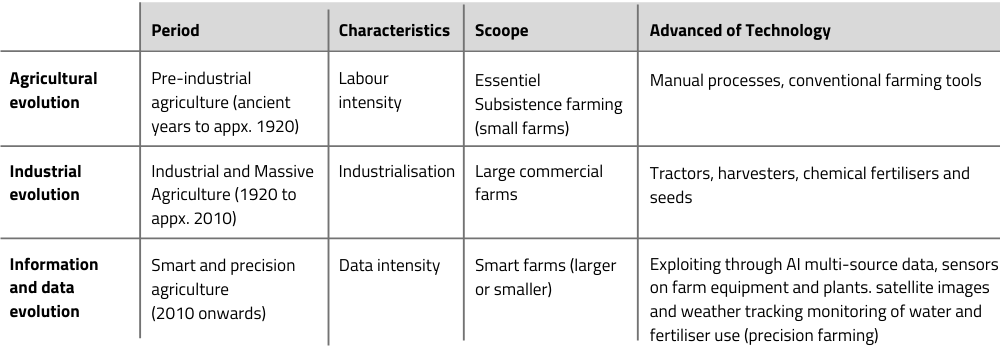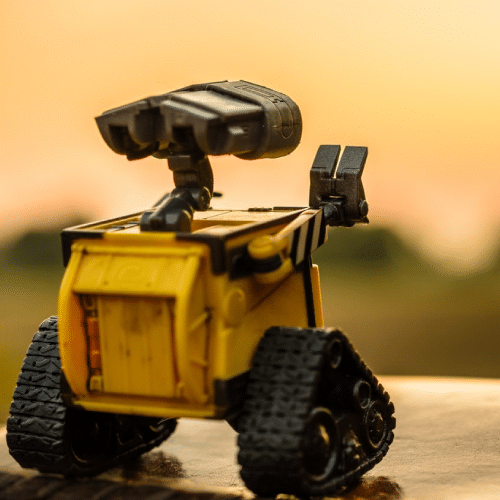Despite common perception, agriculture has been a giant step ahead of other industries in terms of technology adoption since the early 50s. We are now in the age of smart and precision agriculture.

While there has been a lot of talk lately of self-driving cars, farmers have been making good use of self-driving tractors for more than a decade—in large part thanks to a partnership between John Deere and NASA’s Jet Propulsion Laboratory (JPL) on GPS receivers.
The story starts with GPS, which was still relatively new in the mid-1990s when John Deere, based in Moline, Illinois, began using it for precision agriculture. The company combined GPS location data with readings from sensors on a harvesting combine to determine the crop yield in different parts of the field.
Autonomous tractors, satellite farming are realities
New trends are emerging with the aim to combine ethics, productivity, and quality. Key players are acting in consortiums, mixing approaches from the automotive and agricultural fields.
Materials and machines are evolving fast. Startups (e.g., Bill Berry and Karott) emerge and complete or extend offers from historical actors (e.g., Manitou). Such solutions allow farmers to gather and process data from sensors they already use.
Data is increasingly important, and farmers rely on data more than ever to increase their yields. The data helps determine which crops to plant, which fertilizers to spread, and how to plant crops with less waste.
The Software Challenges
- Interfaces are increasingly complex, need to be ruggedized and need regular updates while, at the same time, the UI needs to be user friendly
- System security + data security
- Performance optimization
- Connectivity ISOBUS standard
- AI integration
- Realtime information access from sensors including nutrition content – protein, starch, fiber, sugar, nutrient levels for fertilizer dispersal, harvest information
The Witekio Response
- Proficiency in designing and developing complex Linux embedded systems
- Proven effective know-how in complex user interface including
- Embedded and IoT device security
- Deep knowledge of connectivity challenges
- At the forefront of edge AI
- Architecture to provide a whole-system approach to data capture and aggregation
3 Areas Where Witekio’s Software Proficiency Will Help You Make the Difference
In addition to long-term Linux system expertise and a long track record in designing and developing complex industrial UIs, Witekio is well-advanced in terms of device security, complex connectivity challenges and edge AI.
1/ Embedded and IoT Device Security
2/ Interoperability and ISOBUS standard
ISO 11783 – also known as ISOBUS – is the international standard for agricultural electronics. It was developed to ensure the interoperability of different farm equipment from different manufacturers. Such interoperability is a true prerequisite for precision agriculture and is a must-have for the modern connected farmer. Unfortunately, in a world where there are more than 20 billion connected devices, there is still some significant work to be done to ensure all agricultural tech aligns with the standard.
Systems integration is increasingly an issue that farmers face. Having different agricultural technology products work together is not a task for the farmer – it’s a task for device manufacturers and technology companies. Vendors who make their products easier to integrate with and operate alongside existing technologies will have a distinct market advantage and that’s where Witekio’s expertise comes in.
All ISOBUS terminals have a common format for their display screen. Should a farmer plug in a fertilizer spreader, the display will adapt to the new data and machine. Swap out the spreader for a baler and the display adapts accordingly. Witekio engineers can ensure that the graphical representation of different functions have the same layout and style and give a farmer another reason to choose an ISOBUS-ready product.
3/ And Next? Edge AI
Precision agriculture has revolutionized the way that farming is done – yet it’s still only the beginning.
“The explosion of data in the last ten years and more is already arming farmers with key insights with which to optimize process and outcomes. But the next wave of data innovation must go further,” wrote Barclays in a recent agritech report. “Bringing evidence, analysis, conclusions and recommendations for solutions to life simply and visually is the last piece of the puzzle, enabling farmers to make mission-critical decisions quickly and confidently.”
With sensors proliferating rapidly, devices with Edge AI capabilities are increasingly common. Artificial intelligence is effective in analyzing multi-source data, sourced from sensors on farm equipment and plants, satellite images and weather tracking, as well as monitoring of water and fertilizer use. Whether applied on large-scale or small-scale farms, Edge AI can transform the way farms operate while providing multiple new forms of value for the farmer, consumer, and the wider society. Witekio’s experience in embedded software with Edge AI devices will help drive such transformations and vendors who leverage this experience will be perfectly positioned to grab significant Edge AI market share.







